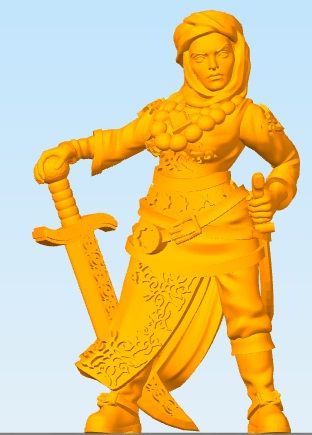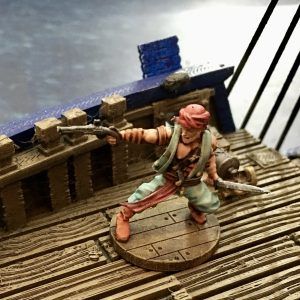Description
Sayyida al Hurra (1485 – 1561), was Hakimat Titwan (Governor of Tétouan) between 1515–1542 and a Moroccan privateer leader during the early 16th century. She is considered to be “one of the most important female figures of the Islamic West in the modern age”.
The life of Sayyida al-Hurra can be understood within geopolitical and religious contexts, particularly the struggle between Muslim and Christian empires during her lifetime. The Muslim Ottomans had captured Constantinople in 1453, marking the end of the Roman Empire. Al-Hurra was two years old when the Portuguese started their colonial conquest by capturing some ports at the western coast of Morocco, starting the year 1487. A few years later, Granada fell into the hands of the Catholic Monarchs Isabella I of Castile and Ferdinand II of Aragon and forced conversions of Muslims in Spain followed.
Allied with the Ottoman corsair Barbarossa of Algiers, al-Hurra controlled the western Mediterranean Sea while Barbarossa controlled the east. She was also prefect of Tétouan. In 1515, she became the last person in Islamic history to legitimately hold the title of al Hurra (Queen) following the death of her husband, who ruled Tétouan. She later married the Berber King of Morocco, Ahmed al-Wattasi, but refused to leave Tétouan to do so. This marriage marks the only time in Moroccan history a king married away from the capital, Fez.
Sayyida could neither forget nor forgive the humiliation of being forced to flee Granada. In her wish to avenge herself on the “Christian enemy”, she turned to piracy. She made contact with the legendary Ottoman admiral Hayrettin Barbarossa of Algiers. Piracy provided a quick income, “booty and ransom for captives”, and also helped to keep alive the dream of returning to Andalusia. She was well respected by Christians as a queen who had power over the Mediterranean Sea, and over the release of Portuguese and Spanish captives. For example, in The Forgotten Queens of Islam Fatima Mernissi mentions Spanish historical documents of 1540, according to which there were negotiations “between the Spaniards and Sayyida al-Hurra” after a successful pirating operation in Gibraltar in which the pirates took “much booty and many prisoners”.
Sayyida al-Hurra is a possible inspiration for the myth of Califia, and therefore may have indirectly inspired the name of California.
Designed by Iain Lovecraft
Complete with 28mm round MDF bases.







Reviews
There are no reviews yet.